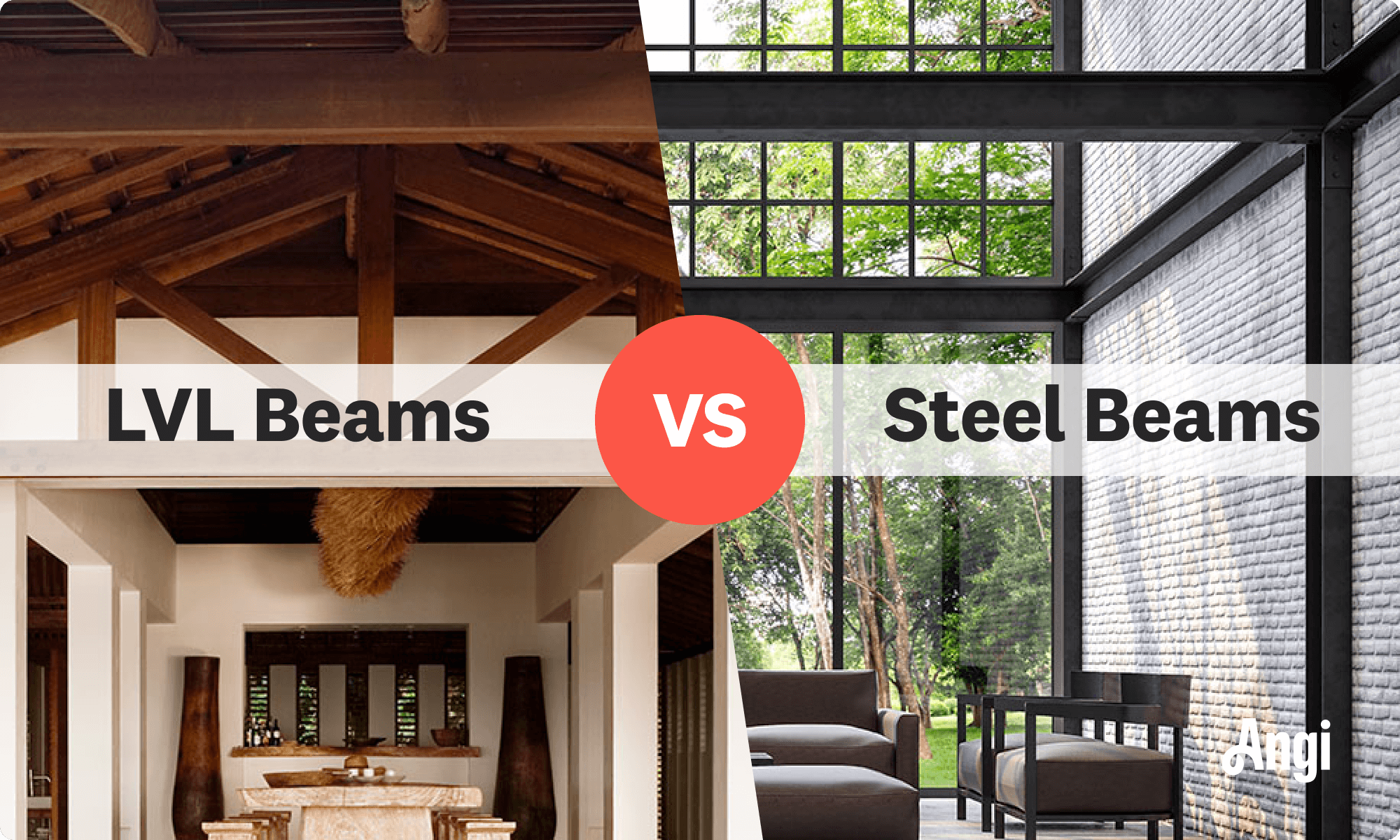
Looking to add utility and easier access to your basement? Use this guide on the cost to cut a concrete wall to add a door to your basement.
There's a lot to love about LVL beams


LVL beams are engineered wood products used in nearly all homes today.
These composite beams consist of several layers of thin wood held together by adhesive.
LVL beams are extremely durable and ideal for both interior and exterior use.
You may need to worry about warping concerns in some instances.
LVL beams typically cost around $30–$12 per linear foot
If you're looking for engineered wood beams for your upcoming home project, LVL beams should certainly be at the top of the list. As one of the strongest engineered wood products available, LVL is great for stabilizing heavy loads. But what is an LVL beam? This guide will help you become familiar with this popular building option.
A laminated veneer lumber (LVL) beam is a commonly used engineered wood product. In fact, LVL beams are used throughout nearly every room when building a home. As a type of structural composite lumber (SCL), the LVL beam is constructed using several thin layers of wood held together with an adhesive.

LVL beams can be made using different types of wood, depending on the manufacturer. Here are some of the most common types you’ll find:
Douglas fir
Poplar
Southern yellow pine
Larch
Home builders use LVL beams in a variety of different ways. They are suitable for both interior and exterior use. Here are the most common uses for LVL beams:
I-beam joists for flooring spans
Headers for wide windows
Carrying beams
Rim boards
Roof trusses
Patio doors
Openings around garage doors
Decks
Open-concept kitchens

If you’re comparing wood beams versus steel beams, you might land on LVL beams for a new build, renovation, restoration, or addition. With so many options available today for construction materials, it's important to know the advantages and disadvantages of every choice. Here are the primary benefits of choosing LVL beams.
LVL beams are customizable, making them easy to adjust based on your home’s needs. Due to the manufactured aspect of LVL beams, you aren't bound by the log length. They also come in different widths, lengths, shapes, and thicknesses, and their versatility allows them to be used throughout a home.
Compared to other timber options, LVL beams are less expensive. And since they’re typically used for large projects, the lower the price, the better.
LVL beams are extremely resilient against wind, heavy loads, and more. Quality control during LVL production is excellent and comes with minimal defects, which helps add to the material’s resiliency.
When constructing buildings, LVL beams have gained popularity for their strength and versatility. However, like any building material, LVL beams also come with their own set of drawbacks. Understanding these limitations can help builders and homeowners decide whether LVL beams are right for their construction projects.
Each brand of LVL beam has precise installation requirements and specific conditions that must be met when storing them during projects to avoid rot. This requires a lot of precision on the installer’s part and should be taken care of professionally.
LVL beams, while resilient, do have damage risks. Their layered design can cause warping or splitting, and they are also at risk of delamination. LVL is not ideal for external facades unless you apply a special treatment or the damage risks are even higher.
While LVL beams offer some great customizable features, you shouldn’t drill holes into them, as they can damage the structural integrity. This may be a roadblock, depending on your project needs. Talk to a local framing contractor if you’re unsure whether they’re right for your work.
The average LVL beam cost is $3 to $12 per linear foot. If you're hiring professionals to install LVL beams, installation costs range from $50 to $200 per linear foot.
Based on what you plan to do with your LVL beam, it's critical to call everyone from a licensed architectural engineer to a local foundation repair contractor to ensure you use the right beam size and placement for your renovation project.
From average costs to expert advice, get all the answers you need to get your job done.

Looking to add utility and easier access to your basement? Use this guide on the cost to cut a concrete wall to add a door to your basement.

Beam installation costs are an important consideration if you’re building a home or doing renovations. Learn about average costs and factors in this guide.

Looking to remove load-bearing walls and vertical supports to open up your living space? Learn about what affects the cost to install an LVL beam.

A squeaky floor may just be an annoyance, or it may signal a structural problem. Learn when to be concerned about a squeaky floor.

A home doesn’t collapse unexpectedly. Learn the warning signs that a house will collapse, so you can protect your family and your home.

Learn what a structural engineer is, what they do, when you might need to hire one for your home project, and how much they charge.